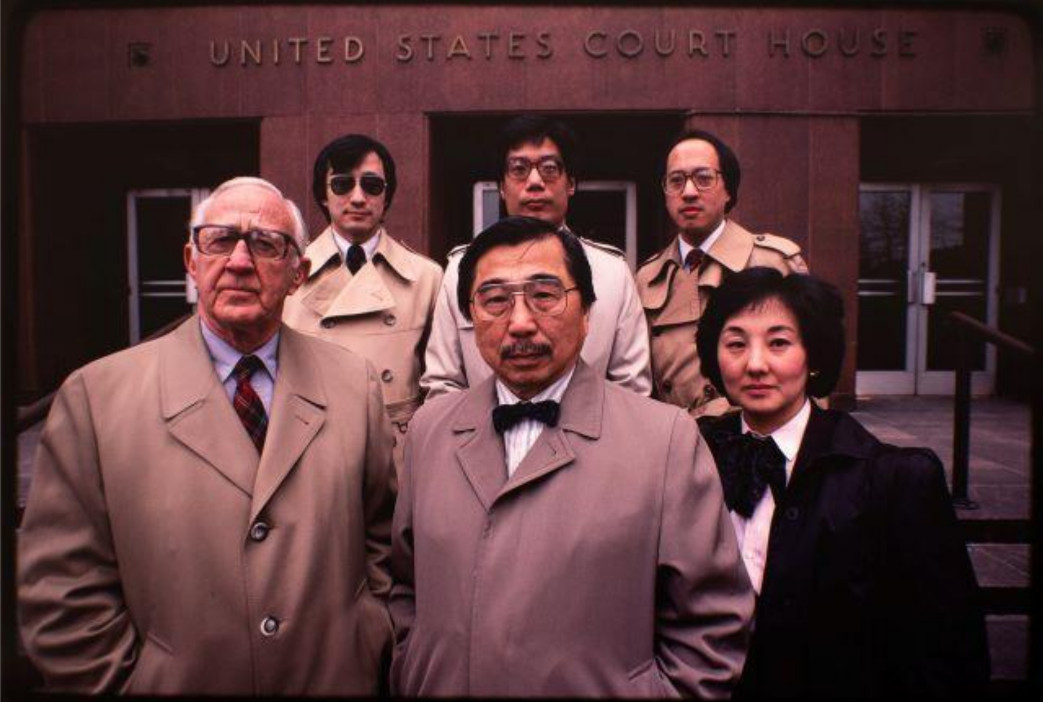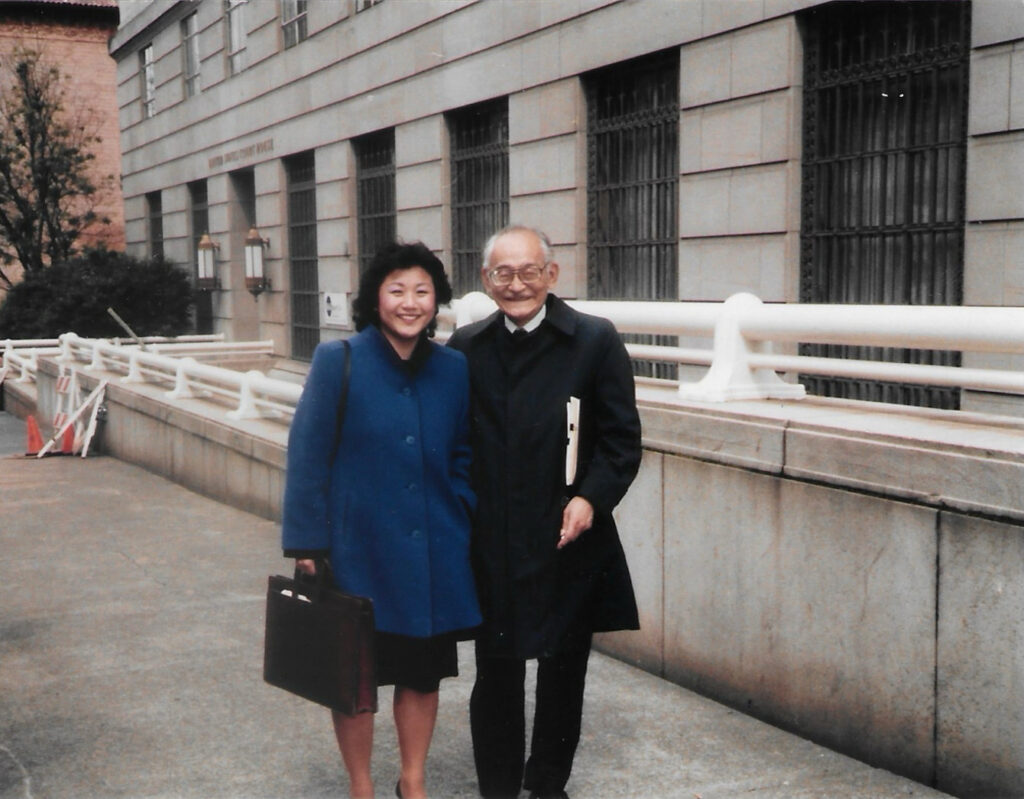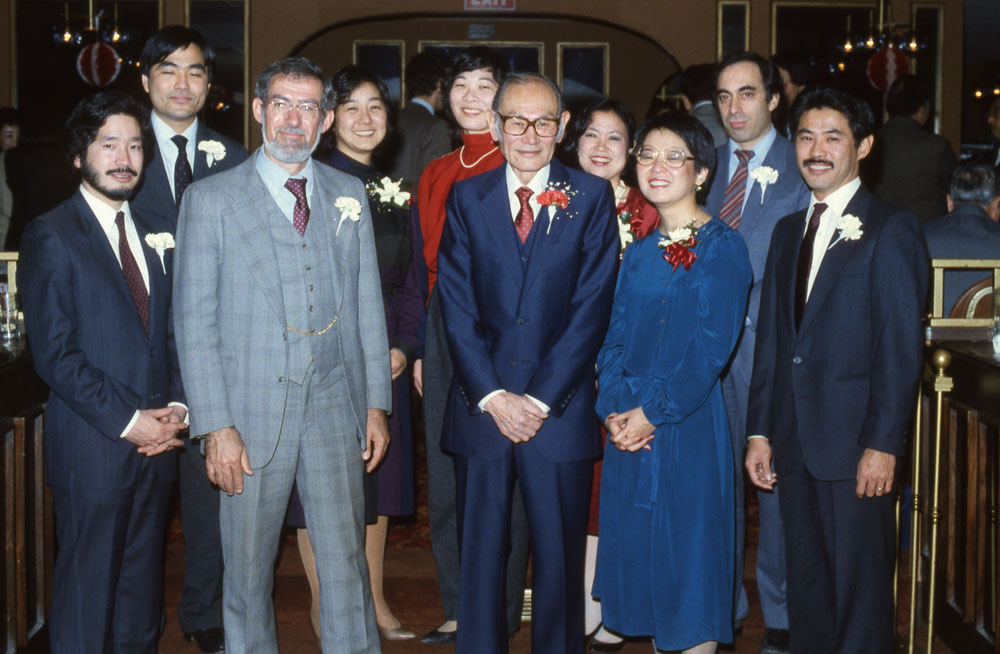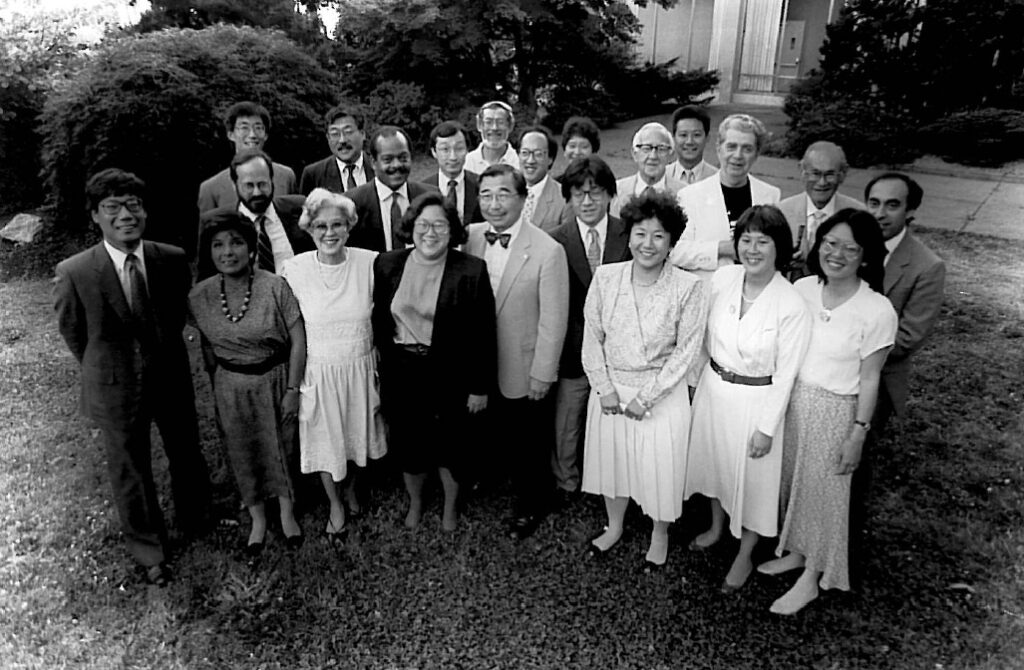March 11, 2024
Lorraine Bannai was part of the legal team that in 1983 successfully overturned Fred Korematsu’s conviction for his wartime civil disobedience. Along with similar wins for fellow resisters Gordon Hirabayashi and Minoru Yasui, these three legal cases helped push forward the fight for redress — but the central role played by Bannai and other Japanese American women has long been overlooked. In this guest post, she acknowledges the monumental contributions these women made to this pivotal chapter in Japanese American history.
Kathryn Bannai was lead counsel for Gordon Hirabayashi and Peggy Nagae lead counsel for Minoru Yasui when, in 1983, they filed coram nobis cases to challenge Gordon’s and Min’s WWII convictions for defying orders that led to the Japanese American incarceration. These two Sansei women leaders, lawyers, and activists spearheaded the efforts to exonerate these men, but their critical work has often been erased or misrepresented in the telling of the coram nobis and redress story, even by some of the most well-respected scholars of Japanese American history.
During this Women’s History Month, it’s important to make visible their critical roles in the coram nobis cases, as well as the roles played by other women who worked on these cases.
During World War II, the Supreme Court, in three of the most infamous cases in its history, Hirabayashi v. United States, Yasui v. United States, and Korematsu v. United States, upheld the curfew and exclusion orders that led to the mass removal and incarceration of Japanese Americans. The Court held that the orders were justified by military necessity, relying mainly on racial stereotypes and innuendo. For decades, these cases stood as a cloud over Gordon, Min, Fred, and the rest of the Japanese American community.
Forty years later, Professor Peter Irons and archival researcher Aiko Herzig-Yoshinaga found documents in the government’s own records that proved that the wartime government had suppressed, altered, and destroyed material evidence when it was arguing the Hirabayashi, Yasui, and Korematsu cases before the Court.
Based on this stunning new evidence, young Japanese American lawyers quickly organized three legal teams. In San Francisco, Dale Minami led a team to represent Fred Korematsu in reopening his case. Kathryn Bannai led a Seattle team representing Gordon Hirabayashi. And a third team, led by Peggy Nagae, was formed in Portland, Oregon, to represent Min Yasui.

Kathryn Bannai had her own law office in Seattle’s International District when Gordon Hirabayashi asked her to represent him. A Sansei raised in Gardena, California, she absorbed the lessons of the Civil Rights Movement and early protests against racism. She went to law school and began a career of public service. After handling civil rights cases and representing poor clients, she started her own private practice as one of the first Asian American women lawyers in Seattle. She served as president of the Seattle Chapter of the Japanese American Citizens League during the fight for Japanese American redress, and she organized small cadres of like-minded activists to work on civil rights issues of the day, including testifying before the Commission on Wartime Relocation and Internment of Civilians on the precedents for redress.
She met Gordon through this community activism. When the opportunity arose to reopen his case, Gordon asked her to be his lawyer. Kathryn organized a team to assist her and led their work. When the government asked the court to dismiss Gordon’s case, Kathryn’s argument in court defeated the government’s request and paved the way for the case to proceed to a full evidentiary hearing and successful appeal. She stepped down as lead counsel after the birth of her first son — but not before making major contributions that laid out a strong foundation for the case. She has since served on numerous governmental, non-profit, and community boards, including now on the Board of Trustees of the Japanese American National Museum.
Peggy Nagae was in private practice when she became lead counsel for Min Yasui and continued that role when she became the Assistant Dean for Academic Affairs at the University of Oregon School of Law. She had been raised poor, on a farm in Oregon, and was influenced by her education at Vassar College and, like Kathryn, by the Civil Rights Movement. She had a strong sense of fighting injustice, was a politically active organizer, and decided to go to law school after seeing law as a means to achieve social change. After graduation, she did civil and criminal defense work and, among her other public service, she served on JACL’s National Redress Committee.

Min contacted Peggy, whom he had already met and who was recommended to him, to gather a team to reopen his case. When the government asked the court to dismiss Min’s case, as it did in Korematsu and Hirabayashi, the judge reached a different decision. While the government agreed with Min that the court should vacate his WWII conviction, it asked the court to dismiss his claims that the government had lied to the Supreme Court. Peggy argued that Min would not receive justice unless the court acknowledged the wrong that had been done. Disappointingly, the judge agreed with the government. While he vacated Min’s conviction, he refused to address the proof of government fraud. Peggy appealed on Min’s behalf, but Min passed away before his appeal could be heard and his case was dismissed.
Peggy continued her activism, including with numerous national Asian American legal and civic organizations. Today, she is the principal of Peggy Nagae Consulting, where she focuses on leadership, inclusion, equity, and belonging.
Other women served key leadership roles on the coram nobis legal teams. Karen Kai, Leigh-Ann Miyasato, Donna Komure, and I were on the Korematsu legal team. While all of us were involved in the ongoing work of participating in key strategic decisions, each of us played distinct roles. In addition to helping to compile the factual record, Karen played a principal role in acting as a liaison between the three legal teams. Leigh-Ann, then working with a firm in San Francisco, provided her expertise on seeking attorneys’ fees, among other things. Donna coordinated the submission of amicus briefs (supporting arguments from organizations as “friends of the court”). I served many roles — doing legal research, drafting, among others — but also joined Peter Irons in leading a team of lawyers and law students in summarizing hundreds of documents. Kathryn and Karen Korematsu, Fred’s wife and daughter, said they were so happy that there were women on Fred’s team.

Sharon Sakamoto, Karen Narasaki, Diane Narasaki, and Nettie Alvarez served on the Hirabayashi team. Sharon, incarcerated at Minidoka when she was born, was a law student when she joined the team and provided key legal research, among many other contributions. She was drawn to and inspired by the “wonderful, warm, accomplished, and smart” women on the team, particularly Kathryn Bannai, who showed her what women in the law could look like. Karen brought her expertise on appeals gained from her experience as a clerk for the federal court of appeals. Diane, who was not a lawyer, provided leadership on outreach and fundraising, preparing press releases and conferences with the media.
On the Yasui team, Fern Eng and Mary Mori — both in private practice in Eugene, Oregon — played numerous roles, doing whatever was necessary for the case, including, as Peggy recalls, reviewing hundreds of the documents involved in the litigation.
Most of these women continued their work in the public interest. Karen Kai continued her activism, particularly in San Francisco’s Japantown where she, for example, helped to fight the effort to take a building that had been paid for by Japanese American immigrant women. Leigh-Ann Miyasato went on to serve as the Washington, DC representative for the National JACL and to help launch what is now the Asian Pacific American Institute for Congressional Studies. I became a law professor, have worked on civil rights litigation with the Fred T. Korematsu Center for Law and Equality, and wrote a book about Fred Korematsu and his cases. Sharon Sakamoto became the first president of the Asian Bar Association of Washington after it was formally incorporated. And Karen Narasaki has served in a wide range of leadership positions, including as Washington, DC representation for the National JACL, as Executive Director of what is now Asian Americans Advancing Justice, and as a member of the US Commission on Civil Rights.
Too often, the faces of significant movements in Asian American history have been men. To create a full picture of that history, we need to also see and celebrate the women who led.

—
By Lorraine Bannai, Professor Emerita and Director Emerita, Fred T. Korematsu Center for Law and Equality, Seattle University School of Law
Make a gift to Densho to support the Catalyst!
Resources:
Interview of Kathryn Bannai for Seattle JACL’s Legacy Historical Project, March 17, 2022.
Kathryn A. Bannai, Gordon Hirabayashi v. United States: “This is an American Case,” 11 Seattle J. Soc. Justice 41 (2012).
Interview of Peggy Nagae, Densho, April 17, 2009.
Peggy Nagae, Justice and Equity for Whom? A Personal Journey and Local Perspective on Community Justice and Struggles for Dignity, 81 Or. L. Rev. 1133 (2003).
This project was supported, in part, by 4Culture/King County Lodging Tax.

